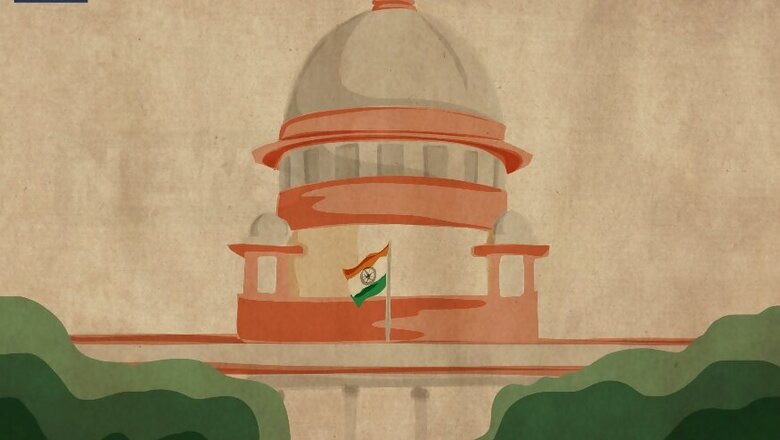
views
New Delhi: The Supreme Court on Wednesday ruled that the concept of creamy layer shall be applicable in reservations for Scheduled Castes and Scheduled Tribes.
A constitution bench headed by Chief Justice of India Dipak Misra held that a constitutional court is empowered to strike down any reservation meant for a creamy layer among the most backward classes.
According to the judgment authored by Justice Rohinton F Nariman on behalf of the bench, while the Presidential Lists may include any group or community as SC or ST, the principle of creamy layer can be applied by a court on the touchstone of equality among the same group or sub-group.
“The whole object of reservation is to see that backward classes of citizens move forward so that they may march hand in hand with other citizens of India on an equal basis. This will not be possible if only the creamy layer within that class bag all the coveted jobs in the public sector and perpetuate themselves, leaving the rest of the class as backward as they always were," noted the bench.
It pointed out that when a court applies the creamy layer principle to Scheduled Castes and Scheduled Tribes, it does not in any manner tinker with the Presidential List under Articles 341 or 342 of the Constitution of India.
“The caste or group or sub-group named in the said List continues exactly as before. It is only those persons within that group or sub-group, who have come out of untouchability or backwardness by virtue of belonging to the creamy layer, who are excluded from the benefit of reservation,” added the bench.
The bench shot down a plea by the central government to do away with the concept of creamy layer among the SC/ST groups.
The court said that when Articles 14 and 16 are harmoniously interpreted along with other Articles 341 and 342, it is clear that Parliament will have complete freedom to include or exclude persons from the Presidential Lists based on relevant factors.
“Similarly, constitutional courts, when applying the principle of reservation, will be well within their jurisdiction to exclude the creamy layer from such groups or sub-groups when applying the principles of equality under Articles 14 and 16 of the Constitution of India," held the bench.
The court said it does not agree with the views of then CJI KG Balakrishnan in Ashoka Kumar Thakur's case that the creamy layer principle is merely a principle of identification and not a principle of equality.
The bench further turned down the central government's request to refer the 2006 M Nagaraj's judgment to a seven-judge bench for a reconsideration in so far as it laid down various conditions.
The court maintained that while the previous judgment was absolutely right in laying down the concept of creamy layer among SC/ST groups, it was incorrect to prescribe for a test of backwardness.
The Scheduled Castes and the Scheduled Tribes are the most backward or the weakest of the weaker sections of society, and are, therefore, presumed to be backward, said the bench, as it held that states will no longer require to collect quantifiable data to determine backwardness of these groups.
However, the bench affirmed the other two conditions laid down in M Nagaraj's judgment—quantifiable data on inadequacy of representation and overall administrative efficiency.
“We may make it clear that quantifiable data shall be collected by the State, on the parameters as stipulated in Nagaraj on the inadequacy of representation, which can be tested by the courts. We may further add that the data would be relatable to the concerned cadre," held the top court.
It emphasised that that “efficiency of administration has to be looked at every time promotions are made."
The bench also declined another plea by the central government to lay down that the proportion of SCs and STs to the total population of India should be taken to be the test for determining whether they are adequately represented in promotional posts.
The apex court clarified that it would be left to the States to determine adequate representation depending upon the promotional post that is in question.


















Comments
0 comment